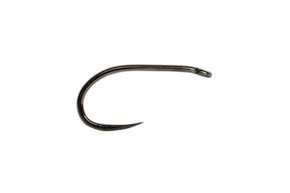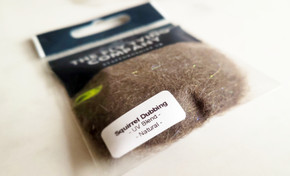Origin and History
The Viva is a modern stillwater lure that originated in the UK during the mid-20th century. Developed for reservoir trout fishing, it quickly earned a reputation for its effectiveness when fish are feeding deep or in cooler conditions. The combination of a black body, green tag, and marabou tail makes it highly visible and mobile in the water, triggering aggressive takes from rainbow trout in particular. It remains a competition angler’s favourite and a must-have in any stillwater fly box.
Materials
- Hook: Lure or long-shank hook, sizes 8–12
- Thread: Black 6/0 or 8/0
- Tail: Black marabou with a hint of green flash (optional)
- Tag: Fluorescent green chenille or floss
- Body: Black chenille or seal’s fur dubbing
- Hackle: Black cock hackle, palmered through the body
Popular Variations
- Beadhead Viva – adds gold or tungsten bead for depth
- Cat’s Viva – green tail replaces black marabou
- UV Viva – incorporates UV materials for added attraction
- Mini Viva – tied small for pressured fish
- Weighted Viva – underbody lead wraps for sinking fast
Step-by-Step Tying Guide
- Start thread at the hook eye and lay a smooth base down to the bend.
- Tie in a tail of black marabou, adding a strand of green flash if desired.
- Secure a short section of fluorescent green chenille at the base to form the tag.
- Tie in black chenille and palmer a black cock hackle alongside it.
- Wrap chenille forward to form the body, followed by evenly spaced hackle turns.
- Secure both at the eye, trim, and build a neat thread head.
- Whip finish and varnish for durability.
Seasonality & Representation
The Viva is primarily an attractor lure, effective year-round on stillwaters and reservoirs. It is especially deadly in winter and early spring, when trout are feeding deep and respond well to bold colour contrasts. It does not imitate a specific insect, but the marabou tail provides lifelike movement that suggests small fry or leeches.
Tackle and Setup
- Rod: 9–10ft, 6–7wt for stillwaters
- Line: Floating, intermediate, or sinking lines depending on depth
- Leader: 8–12ft fluorocarbon, strength 6–10lb
- Setup: Fish singly on a sinking line, or as part of a lure team on a drift
Summary Table
| Aspect | Details |
|---|---|
| Origin | UK, mid-20th century stillwater lure |
| Best Seasons | Year-round (best in winter and spring) |
| Represents | Attractor; suggests fry or leeches |
| Hook Sizes | 8–12 |
| Tackle Setup | 9–10ft rod, floating/intermediate/sinking line, 8–12ft leader |












